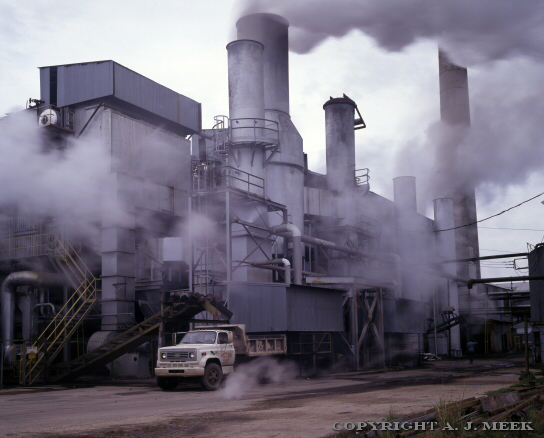
THE PHOTOGRAPHER'S COMMENTS
The In late November the sugar cane fields
are burned to purify them from blight. The traveler to the countryside can see
clouds of white smoke on the horizon. Upon closer view, workers walking behind
flame tractors light the fires preparing the fields for spring planting like
their forefathers did generations ago.
 During
the cane cutting season mills are working overtime, their great stacks are
rolling with smoke and steam, turning the cane into sweet syrup. The stacks,
which can be seen for miles in the flat Louisiana landscape, are painted with
the name of the mill down its concrete stack, Lula, Westfield, Alma, and others. During
the cane cutting season mills are working overtime, their great stacks are
rolling with smoke and steam, turning the cane into sweet syrup. The stacks,
which can be seen for miles in the flat Louisiana landscape, are painted with
the name of the mill down its concrete stack, Lula, Westfield, Alma, and others.
Cane loaders and trucks clog the rural highways often spilling raw cane in the
road. The photographer checks in at the front office asking permission to
photograph. "Sure but stay out of the way and donšt get run over."
With that good advice, he dodges wet muddy ruts finding a vantage point "out of
the way", the photographer sets up his large format camera on a tripod.
Suddenly, speeding, bouncing, a tractor pulling a trailer with high sides full
of cane is heading toward him requiring a quick escape. He steps in a puddle of
water with mud covering his shoes, and then sets up again after the danger has
past. No point in trying to keep the equipment clean. That will have to come
later.
Working quickly the photograph is made. There are photographs to see everywhere.
There is urgency that this will all be gone at one point in the future. In a few
years the photographer will return. Instead of finding a thriving industrial
landscape he will find only a quiet factory with much rust. After exhausting his
film he drives back on the highway throwing mud from his tires headed for home
in Baton Rouge.
A. J. Meek
Return to "Vanishing
Sugar" Exhibit

HOME I
BIOGRAPHY I
GALLERIES I
BOOKS I
LINKS I
CONTACT
 |